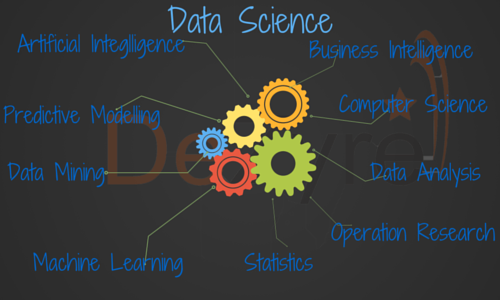
Disciplines Involved In Data Science
In general, data science according data science coaching in Hyderabad involves the following disciplines:
The Field Of Application: The field of application should be understood to mean the sector (the environment) in which one wishes to produce a data product or solve a problem. This could be, for example, the stock market. If we want to build a predictive model for traders based on past stock prices.
Mathematics (Statistics, Probability, Linear Algebra, and Analysis): Mathematics is heavily involved in data science. Indeed, the problems are very often translated into mathematical models before being solved.
Computing: Computing is the basis of data science because models are implemented with code and computer tools. The data being digital, their acquisition, storage, and processing are made thanks to data processing.
Machine Learning: Machine learning techniques and Online teaching are increasingly used in data science.
Algorithmic: The mastery of this science is essential since all the models are in the form of algorithms. It is essential to understand concepts such as complexity.
Common Sense: This is by far what you need most when faced with a complex problem.
Being a data scientist does not imply being an expert in all these fields (even if you have more knowledge in these fields, the better). Indeed, a data science project is very often complex and consists of several stages. Therefore, we can find in a team people with different profiles, each being in charge of a specific stage.
Stages Of A Data Science Project
A data science project can be seen as a succession of the following steps:
Understanding The Business Problem
It is a question of reformulating the problem to make it as straightforward as possible. At the end of this step, we must know more or less which path to take throughout the project.
Raw Data Acquisition
It is a matter of fetching the data on which we will have to work. This data is supposed to be identified from the first step.
Data preparation
The data obtained in the previous step is raw and unstructured. The purpose of this step is to clean them and structure them according to our needs.
Modeling
It is about setting up our model, our algorithm, our solution to solve the original problem.
Evaluation
This involves testing our model’s efficiency and then moving on to the next step if we have satisfactory results or reconsidering the model from the previous step (or even going back to step 2).
The Deployment
This is the last phase, the conclusion that gives the solution to our problem.








